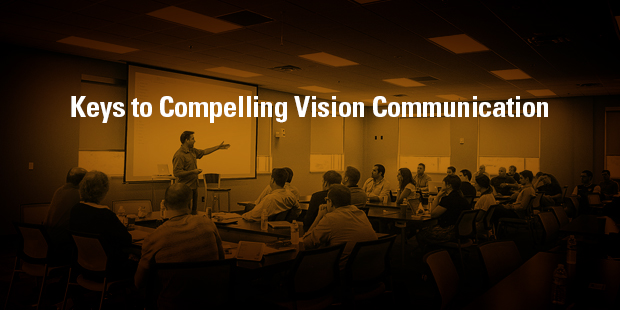When was the last time you sat down to watch a TV show (other than, say, a football game) when it aired live?
And in the car, how often do you listen podcasts or your own playlists compared to the radio?
Even just a few years ago, you likely would have answered very differently.
The world around us continues to change because people are changing with it. The church is never immune from cultural change, and the decline of radio and television give us a window into some of the changes the church is struggling with now and will continue to struggle with in the future.
The mission of the church will never change, but the methods have to. Otherwise, you die. Plain and simple.
The television and radio industries have adapted better to the changing world than, say, newspapers have, but as this Pew Research Centre report makes clear, the industry is changing dramatically.
Here are 5 changes I see happening both now and in the future and some implications for the church.
1. Disappearing Radios Create A Value Crisis
One mainstay of the car dashboard in the last 60 years has been the radio. But that’s changing.
As this article so insightfully points out, the car radio is now disappearing off of dashboards. Instead, a media console is appearing that basically resembles your phone. You now have to scroll several screens deep to find any AM/FM or even satellite stations.
The question, of course, is will anyone listen to the radio if they have to work to find it? Or, asked another way, did we really only listen because it was the only option?
In many ways, the church was to the community what the radio was to the car dashboard. Churches dotted the countryside, towns and cities and people went. Now you’re just as likely to find antique stores in those historic churches as you will people worshipping God. Or, if you pass by the local church, the assumption is that it’s become a club for people of similar views and persuasions to which the public is not really invited, despite what the sign says.
So how will radio get heard when it’s not front and centre in the future car? Only one way: by providing sensational content no one else is producing.
In an age of customized playlists, podcasting and on-demand content, I’m not sure how that one’s going to go. (If you’re interested, I did an interview for a broadcasting student on the future of radio that you can listen to here. As a former radio DJ, I find the subject fascinating.)
So what about the church? Our buildings aren’t the key to the future. Nor are our signs. Nor is merely being there.
The greatest statement to the community any church makes is through the lives of its members. And as you know, sometimes that works for us and sometimes it works against it.
When the Gospel displayed in the lives of a church’s members becomes irresistible, the church will grow.
2. Set-Hours Programming Only Really Applies To Live Events Anymore
The change goes far beyond having a radio on the dashboard or a TV in the family room. It’s much more sweeping than that.
Some of you remember having to be home Thursdays at 8 or Mondays at 9 to catch the latest episode of your favourite show.
And if you do, chances are you’re over 40.
The idea of having to be home to watch a show at a set hour is fading quickly. VCRS, DVRS or as we call them in Canada – PVRS – and now on-demand programming have made traditional ‘don’t miss’ moments easy to miss.
The exception? Live events. Sports, award shows, or live shows like The Voice make instant, real-time results meaningful. Otherwise, you can watch Suits or The Walking Dead whenever you want.
The challenge for the church, of course, is that we’ve almost always done live, scheduled programming for which you show up at a set hour. Even with multiple service options, churches are still largely run off of a “be-there-at-10 a.m.” approach to gathering.
And yet every church leader has noticed that it’s getting harder and harder to fill rooms. While there are many reasons for this, we’ve already seen that even people who attend church attend less often (here are 10 reasons for why that’s happening).
So how do you counter that trend? Or should you even try?
Well… let’s think this through. What makes a live event worth attending is that something is at stake in the moment, or if you miss it, you miss it. This is why you watch it live on TV or try to find it on the radio.
Consequently, if your church service consists of interchangeable content with no sense of urgency, immediacy or transcendency, attendance will always feel more optional.
On the contrary, churches that facilitate an experience orencounter with God, or that drive an urgent sense of mission will always be events that people will not want to miss.
Fortunately for church leaders, the activity and movement of God in the lives of his people is something that, when accurately and faithfully facilitated, drives engagement.
The more your church feels like a live event with God moving, the more people will be drawn to attending at a fixed time and place. And in that context, even watching live online won’t feel like being in the room.
Conversely, the more static or interchangeable your services feel, the less people will feel the need to come at a set time and place.
There’s no doubt that a growing number of younger adults seem to be drawn to a more passionate, engaged, almost charismatic form of worship and church. Witness the rise of Hillsong, Elevation Church or the Passion movement. While that’s not the only template for how to do church, the passion and engagement in those services and experiences helps explain why people are willing to line up for them.
The attenders are immersed and consumed. They are anticipating that something is going to happen.
As a result, they’re engaged. And as we’ve already seen, in the future church, engagement will be the key to attendance.
3. Fixed-Formatting Limits Your Options
One of the things traditional radio and television struggle with is what you might call ‘fixed formatting.”
Essentially, radio and TV have to function through paid advertising, so content is interrupted every 2-10 minutes for commercial breaks.
Podcasting creates options that commercial radio can’t match.
I love the fact that on my leadership podcast, I get to have 40-90 minute conversations with leaders that are uninterrupted. I promise you conversations unfold very differently when over an hour than they do if the host is always interrupting the guest with “we only have a few minutes left” or “we have to throw to a commercial and we’ll be right back”.
People interview differently over an hour than they do in five-minute segments. They’re more relaxed. They tell you things they otherwise might not mention and you have a far more authentic conversation than you would if you were constantly interrupted.
With over 100 long-form interviews under my belt on my leadership podcast, I’m sold on the benefits of open-ended formatting. And with podcasting, there’s no limit.
It makes me wonder whether church leaders have far more options available to us than we realize.
What kind of long-form content or alt-format content can your church produce now that more channels are open to it?
At Connexus Church where I serve, we’re starting to experiment with online bonus messages for our series that we don’t run on Sundays.
Our most downloaded bonus episode so far is an indepth interview I did with a spiritual warfare expert that we ran in conjunction with a series on the supernatural. People loved it, and it accomplished something that would have been far more difficult to do during a service on a Sunday.
There are far more options for churches to explore than we’ve explored.
The greatest limits you face as a leader or organization are those you impose on yourself. What limits have you constructed for you and your mission?
4. You No Longer Go To Content… Content Comes To You
Some churches have decided not to do online ministries for a variety of reasons, one of which includes not wanting to compete with live services.
And while I don’t think online church will ever replace church (it can’t…God designed us to gather), it can serve as a great supplement to it.
News networks now have apps and a tremendous social media presence. And can you think of a radio station that doesn’t have a Facebook page?
In the old paradigm, you got the news by going to a station. Now the station sends the news to you. Think about it… you probably first heard most of your news this year via social media.
The church can learn from this. To box content up for consumption only on a Sunday morning, or to simply place it on a website or podcast alone in 40-minute blocks completely under-utilizes content.
Taking snippets or a message to post on social media, insert into blog posts and repackage in various ways so it reaches more people is a much better use of the time, energy and resources that goes into a great message. Not to mention the redemptive potential of exposing more people life-changing messages.
It’s also an incredible outreach strategy. Andy Stanley puts his messages on a separate app and on NBC after Saturday Night Live, reaching an entirely different audience than he does through North Point channels or than most do through traditional Christian channels.
If you’re not repurposing your content, why not? Think about it.
Everybody who was not in your church on Sunday was online. Why aren’t you?
You can expect people to come to you. Or you can go simply go to people.
5. The Explosion Of Information Has Created A Crisis Of Meaning
Our culture has never had access to more information than we do now. Three networks on TV has exploded into hundreds of channels. Radio went from AM to FM to satellite and beyond. And then there’s this thing called the internet.
In all of human history, people have never had access to more information than they do today. But somewhere in the midst of it, meaning has been lost.
The crisis our culture is facing is not a crisis of information. It’s a crisis of meaning.
This is perhaps one of the greatest opportunities for the church in history. No one should be better at providing meaning, hope and perspective.
I don’t mean jumping on Facebook and offering your half-formed opinion on politics, supreme court decisions and anything else you want to rant about. That just adds to the noise and detracts from the Gospel.
I mean sharing intelligent, honest, transparent, soul-nourishing, grace and truth that springs from and points to the source of all wisdom—Jesus Christ.
The Gospel satisfies the deepest needs of the human heart and mind for meaning. And no one should be better at proffering meaning into a culture so desperately in need of it than the church.
What Do You See?
As things continue to change in industries like radio and television, what are you noticing?
Talk with an Auxano Navigator to learn more about how the changing radio and television industry impacts the way your church communicates the Gospel.
> Read more from Carey.

Tags: Carey Nieuwhof, Communication, Radio, TV, radio and television
|
What is MyVisionRoom? > | Back to Communication >


































